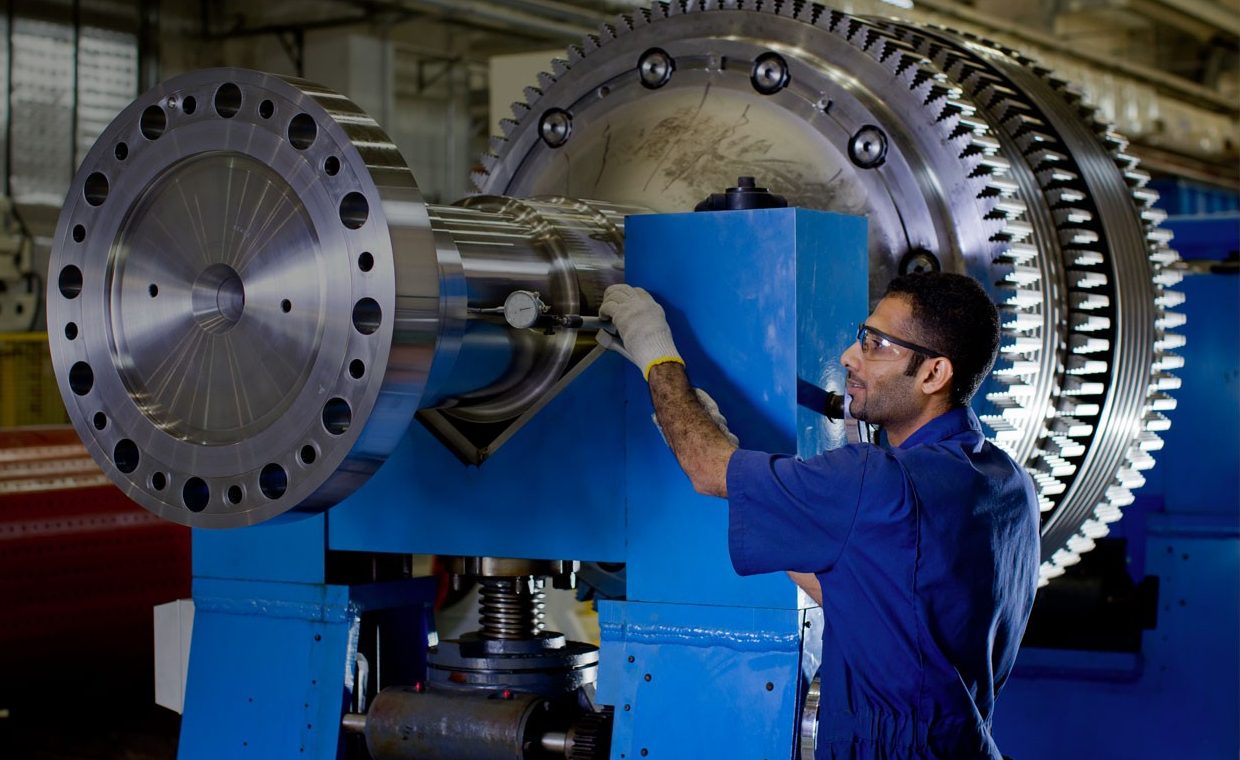Millwright N1-N3
Millwright N1-N3
The work of the millwright is both mechanical and electrical. It involves dismantling, fault detection and repairing of, for example, electric motors, which the millwright will dismantle, and testing, checking the wiring and determining power output and consumption.
Millwrights are highly skilled workers whose primary function is to install and maintain heavy machinery. When machinery arrives at the job site, it must be unloaded, inspected, and moved into position. For light machinery, millwrights use rigging and hoisting devices such as pulleys and cables to lift and position equipment. For heavier jobs, they are assisted by hydraulic lift-truck or crane operators. To decide what type of device is needed to position machinery, millwrights must know the load-bearing properties of ropes, cables, hoists, and cranes.
When installing machinery, millwrights fit bearings, align gears and wheels, attach motors, and connect belts according to the manufacturer’s instructions. They may use hand and power tools, cutting torches, welding machines, and soldering guns
Millwrights must be very precise in their work and have good mathematical skills to measure angles, material thicknesses, and small distances with tools such as squares, callipers, and micrometres. When a high level of precision is required, such as on a production line, lasers may be used for alignment. Once the machinery is installed, millwrights may do repair or preventive maintenance work such as oiling and greasing parts and replacing worn components.
Millwrights may be hired to change the placement of existing machines in a plant or mill to set up a new production line or improve efficiency. Their contribution is key to the planning of complicated production processes. In large shops and plants, they may update machinery placement to improve the production process. They may even move and reassemble machinery each time a new production run starts. In smaller factories, however, machinery is rearranged only to increase production and improve efficiency. Millwrights consult with supervisors, planners, and engineers to determine the proper placement of equipment based on floor loads, workflow, safety measures, and other important concerns.
The increasing use of automation in many industries means that millwrights are responsible for installing and maintaining more sophisticated machines. When working with this more complicated machinery, millwrights are assisted by computer or electronic experts, electricians, and manufacturers’ representatives.
Essential Millwright Skill Set
- Color vision
- Critical-thinking skills
- Physical stamina
- Physical strength
- Troubleshooting skills
- Communication Skills
Learning Activities during Institutional Training
Course Outline
- Government departments
- Transportation services
- Municipalities
- Factories
- Mines
- Industries
- Private electrical businesses
- Companies such as Arcelor Mittal, Eskom and Sasol
- Self-employment
- Introduction to the Millwright Trade
- Safety, health, environment, risk and quality principles in the workplace
- Freehand drawing
- Code of practice for engineering drawing (symbols and abbreviations)
- Drawing instruments and equipment
- Dimensioning methods
- Isometric drawings
- Assembly and detailed drawings
- Basic metallurgy and heat concepts
- Properties of base metals, alloys and synthetic materials
- Non-ferrous metals and ferrous materials
- Metal specifications and testing
- Hand tools to hold, assemble or disassemble components
- Hand-held cutting tools
- Hand-held power tools
- Measurement tools and equipment
- Marking-off tools and equipment
- Rigging (slings, block and tackle, chain block, steel ropes)
- Rigging concepts
- Loads selection and limitations
- Terminology related to screw threads
- Screw threads
- Application of screw threads
- Thread calculations
- Fasteners and locking devices
- Application of fasteners and locking devices
- Drawings of fasteners and locking devices
- Arc welding and gas welding and cutting equipment and consumables
- Arc welding and gas welding and cutting techniques and principles
- Material selection
- Cutting and welding defects
- Safe handling of gas cylinders
- Health and safety risks and protective equipment and measures
- Static and dynamic seals and gaskets
- Types and application of valves
- Types and application of pumps
- Types and functions of conveyors
- Drives (direct and indirect)
- Terminology of drives
- Functions and working principle of drives
- Mechanical working principles, types and applications of gearboxes
- Mechanical working principles, types and applications of clutches
- Mechanical working principles, types and applications of brakes
- Mechanical working principles, types and applications of lubrication systems
- Types and application of bearings
- Mechanical working principles, types and applications of hydraulic systems
- Mechanical working principles, types and applications of pneumatic system
- Diagnostic equipment
- Diagnostic techniques
- Diagnostic testing
- Hand tools and power tools
- Measuring and testing instruments
- Fundamentals of electricity
- Electronics
- Electrical principles of appliances
- Perform soldering activities
- Wireways
- Wiring of installations
- Earthing and bonding
- Rotating electrical machinery – AC motors
- Rotating Electrical Machinery – DC motors
- Rotating electrical machinery – Alternators and Generators
- Concepts, theories and principles of supply Systems
- Batteries
- Transformers
- Types of cables and applications
- Switchgear and control gear
- Lighting systems
- Application of low voltage protection
- Types of low voltage protection
- Low voltage protection parameters and statutory requirements
- Fault find and repair electrical control systems and electrical installations
- Faultfinding principles for electrical circuits
- Faultfinding techniques for electrical circuits
Keep up to date with all the latest & greates
Have questions? Feel free to write us
Call an expert
+27 100 651 675
Write email
Info@londoncollege.co.za
contact@londoncollege.co.za
Visit office
Samro House, 20 De Korte St, Braamfontein, Johannesburg, 2000

